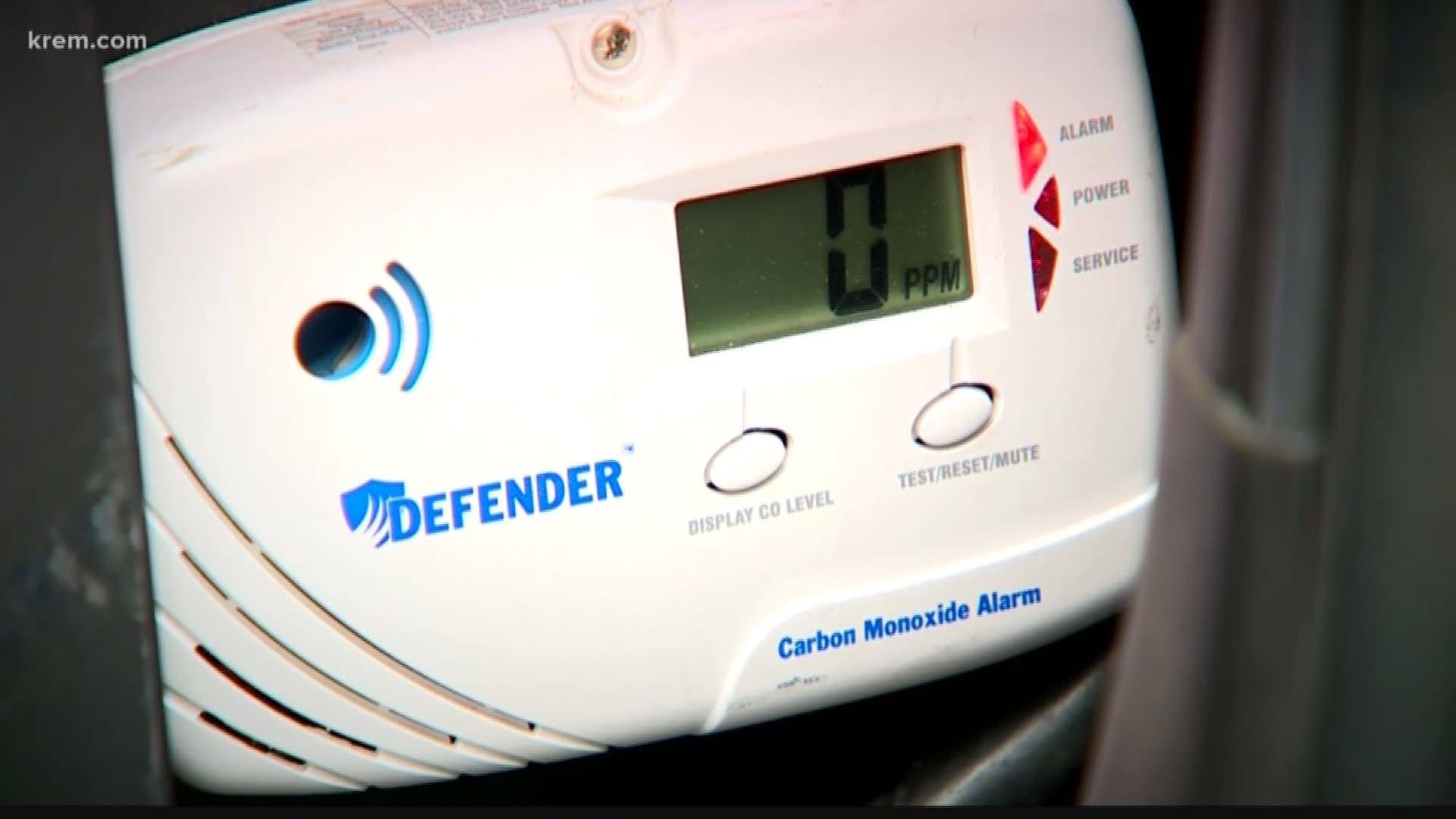SPOKANE, Wash. — Two adults and one child were taken to the hospital on Monday after high carbon monoxide levels were found in an East Central apartment building.
Firefighters discovered the high levels of carbon monoxide on the second floor of the building after people reported feeling sick on Monday, said Spokane Fire Chief Brian Schaeffer.
Tenants told crews on scene that Avista pulled power from the building last week because electrical standards were not up to code.
According to Schaeffer, residents were using three generators that were on the roof near the unit's windows to power portable space heaters and other electronic devices. He said extension cords were run throughout the second floor to accommodate the needs of tenants.
The exhaust from the generators vented back into the cracked windows, causing increased levels of dangerous carbon monoxide to accumulate, Schaeffer said.
This begs the question: how can you prevent and detect carbon monoxide poisoning, and how can you know the building you're in is safe? We looked into it.
Prevention
Carbon monoxide comes from burning fuel, so don't burn fuel inside. Keep generators, grills and the like outdoors, or at least very well ventilated.
Use gas appliances the way they're meant to be used. Don't use your stove to heat your home.
Don't leave you car running inside a closed garage.
Old fuel-burning appliances, like furnaces, without proper ventilation can often cause problems. Be sure to get them checked periodically.
Detection
The symptoms of carbon monoxide poisoning are mostly flu-like: headaches, naseau, weakness, fatigue, dizziness and confusion — many of which the Faris family said they experienced.
There are a couple ways to determine whether those symptoms might in fact be related to carbon monoxide poisoning.
One, you can simply walk outside and get some fresh air. If the symptoms stop, but return when you go back inside, that could be a sign.
If, like the Faris family, many people have symptoms suddenly at the same time, that could be a sign of carbon monoxide
Of course, CO detectors are the best way to keep safe.
Building codes and CO detectors
In Washington, nearly every residence and hotel is required to have them.
Only one exception in the law exists: if you've been in your home since before mid-2009, you aren't legally required to install detectors, but you will before you sell it to someone else.
In Idaho, many residences must have CO detectors next to any place someone sleeps. The laws are slightly less strict, however, as they apply only to new buildings.
If you don't yet have detectors, it's a good idea to put them near where you sleep, since CO can actually knock someone unconscious and eventually kill them without their even waking up.
You'll also want to test your detectors regularly — safety experts often say as much as once per month.
If it's battery powered, you'll likely need to change those batteries every six months or so.
Detectors also decline in effectiveness over time and will eventually need to be completely replaced. How frequently varies by manufacturer, but generally speaking it's about every five years.
Now, if you're in a rental like the Faris family, how can you be sure those places have detectors?
Airbnb says they encourage, but don't require, their renters to provide detectors. You can find out if a place does by looking at the amenities section on the listing.
But the company actually recommends guests bring their own portable detectors, just in case.

